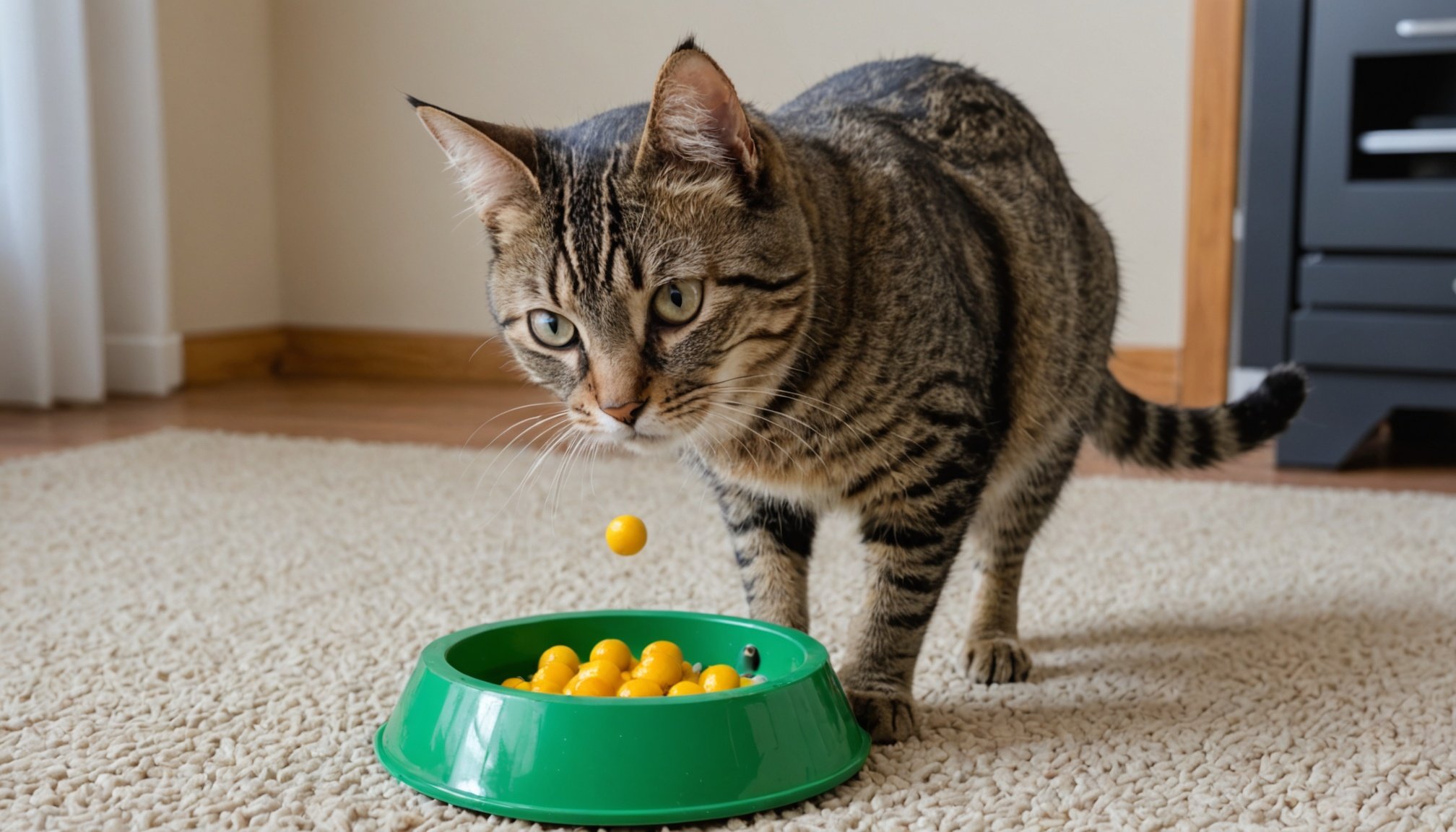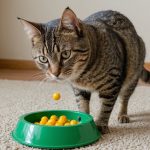Enhancing Environmental Enrichment for Cats with Limited Mobility: Effective Assessment and Improvement Strategies
When it comes to caring for cats, especially those with limited mobility, creating an enriching environment is crucial for their physical and mental well-being. Environmental enrichment is not just about providing toys or space; it’s about stimulating their natural instincts, reducing stress, and improving their overall quality of life. Here’s a comprehensive guide on how to assess and improve environmental enrichment for your feline friends.
Understanding the Needs of Cats with Limited Mobility
Cats, whether they are indoor or outdoor, have inherent needs that must be met to ensure their welfare. As cats age or develop mobility issues, their needs can change significantly.
Dans le meme genre : Spotting and Managing Early Cataracts in Senior Cats: Preserve Your Feline”s Vision with Effective Care
Natural Instincts and Behaviour
Cats are natural hunters with a strong instinct to explore, climb, and engage in play. However, when they have limited mobility, these instincts can be challenging to fulfill. According to the AAFP and ISFM feline environmental needs guidelines, a cat’s level of comfort with its environment is intrinsically linked to its physical health, emotional wellbeing, and behavior.
Impact of Limited Mobility
Limited mobility can lead to boredom, frustration, and a decline in physical and mental health. For example, indoor cats without proper stimulation can become bored and frustrated, leading to negative behaviors such as inappropriate elimination or aggression.
Avez-vous vu cela : Spotting and Managing Early Cataracts in Senior Cats: Preserve Your Feline”s Vision with Effective Care
Assessing the Current Environment
Before making any changes, it’s essential to assess the current environment and identify areas that need improvement.
Observing Behaviour
Observe your cat’s behavior to understand what they enjoy and what stresses them. For instance, if your cat prefers solo play, provide toys and activities that allow them to engage at their own pace.
Identifying Stressors
Identify potential stressors in the environment, such as noisy areas or high-traffic zones, and make adjustments to minimize these stressors. For example, placing the litter box in a quiet, easily accessible area can reduce stress and make it more comfortable for your cat to use.
Creating an Enrichment Program
An effective enrichment program should include a variety of activities and environmental changes to keep your cat engaged and stimulated.
Physical Enrichment
For cats with limited mobility, physical enrichment should focus on low-impact activities that do not exacerbate their condition.
- Catios: Installing a catio, a secure outdoor enclosure, allows your cat to experience the outdoors safely. Catios provide fresh air, sunshine, and stimulation through new sights, sounds, and smells.
- Vertical Space: Providing vertical space such as cat trees or shelves can help your cat climb and observe their surroundings without exerting themselves too much.
- Interactive Toys: Use interactive toys that allow your cat to bat or swat gently, such as feather wands or slow-moving toy mice. These activities keep their bodies active without putting strain on their joints.
Mental Enrichment
Mental enrichment is crucial for keeping your cat’s mind sharp and engaged.
- Puzzle Feeders: Puzzle feeders are an excellent way to stimulate your cat’s natural hunting instincts during mealtime. These feeders require your cat to work for their food, providing mental engagement without physical effort.
- Visual Stimulation: Provide visual stimulation by placing a perch near a window where your cat can watch birds, bugs, and other interesting sights. You can also use a phone, TV, or tablet to play “cat videos” to keep them engaged.
Practical Strategies for Improvement
Here are some practical strategies to enhance environmental enrichment for your cat:
Enrichment Activities
- Sensory Stimulation: Offer different textures, smells, and tastes to stimulate your cat’s senses. For example, provide scratching posts with various textures like carpet, sisal, or cardboard.
- Food-Based Enrichment: Use food-based enrichment activities such as hiding treats or using food puzzle toys. This encourages your cat to forage and hunt, mimicking their natural behavior.
Environmental Changes
- Rotate Enrichment Items: Rotate enrichment items regularly to keep the environment fresh and interesting. This can include changing toys, scratching posts, or even the layout of the room.
- Safe Spaces: Provide safe spaces where your cat can hide and feel secure. This can include hiding spots like a carrier covered with a towel or a cat tree cubby.
Benefits of Environmental Enrichment
Environmental enrichment has numerous benefits for cats with limited mobility.
Reduced Stress and Behavioural Issues
Environmental enrichment can reduce stress and behavioural issues by providing mental and physical stimulation. For example, a catio can reduce boredom and behavioural issues by giving your cat access to the outdoors safely.
Improved Physical Health
Enrichment activities can improve physical health by encouraging regular physical activity. For instance, climbing structures and interactive toys can help maintain muscle tone and mobility.
Enhanced Welfare
Environmental enrichment enhances the overall welfare of your cat by providing a stimulating and comfortable environment. As Dr. Laurie Anne Walden notes, “Environmental enrichment improves physical and mental health and can reduce behavior problems”.
Table: Comparing Enrichment Strategies for Cats with Limited Mobility
| Enrichment Strategy | Description | Benefits | Considerations |
|---|---|---|---|
| Catios | Secure outdoor enclosures | Provides fresh air, sunshine, and stimulation; reduces boredom and behavioural issues | Requires space and installation; ensure safety features |
| Interactive Toys | Toys that allow gentle play | Keeps bodies active without straining joints; mental stimulation | Choose toys suitable for limited mobility; rotate toys regularly |
| Puzzle Feeders | Feeders requiring work for food | Stimulates natural hunting instincts; mental engagement | Ensure feeder is easy to use; monitor for frustration |
| Visual Stimulation | Perches near windows or screens with cat videos | Provides mental stimulation; reduces boredom | Ensure safe access to perches; vary visual content |
| Food-Based Enrichment | Hiding treats or using food puzzle toys | Encourages foraging and hunting; mental and physical stimulation | Monitor for overeating; adjust difficulty level |
| Safe Spaces | Hiding spots like carriers or cubbies | Provides security and comfort; reduces stress | Ensure easy access; maintain cleanliness |
Detailed Bullet Point List: Daily Enrichment Activities for Cats with Limited Mobility
- Morning Playtime:
- Use feather wands or slow-moving toy mice for gentle play.
- Provide short sessions of interactive play to avoid overexertion.
- Mealtime Enrichment:
- Use puzzle feeders to stimulate natural hunting instincts.
- Hide treats around the room to encourage foraging.
- Afternoon Relaxation:
- Place a perch near a window for visual stimulation.
- Offer a scratching post with various textures.
- Evening Engagement:
- Rotate toys to introduce new stimuli.
- Provide a safe space for your cat to hide and relax.
- Nighttime Routine:
- Ensure the litter box is easily accessible and clean.
- Maintain a quiet environment to reduce stress.
Quotes and Insights from Experts
- “Environmental enrichment involves providing indoor cats with activities and experiences that stimulate their natural instincts, such as hunting, climbing, and exploring. These enrichment activities help mimic the mental and physical challenges they would encounter in the wild, keeping them engaged and satisfied.”
- “A cat’s level of comfort with its environment is intrinsically linked to its physical health, emotional wellbeing and behavior. Therefore, it is crucial to tailor the environment to meet the specific needs of your cat.”
- “By providing regular enrichment—whether through toys, playtime, or outdoor access—you can help improve your cat’s quality of life. A catio is a perfect solution for cat owners looking to give their pets the best of both worlds: the safety of indoor living and the enrichment of the outdoors.”
Enhancing environmental enrichment for cats with limited mobility is a multifaceted approach that requires careful assessment and planning. By understanding your cat’s needs, creating a tailored enrichment program, and implementing practical strategies, you can significantly improve their physical and mental health. Remember, every small change can make a big difference in the life of your feline companion. Whether it’s through interactive toys, visual stimulation, or safe spaces, enriching your cat’s environment is a key step in ensuring their welfare and happiness.










